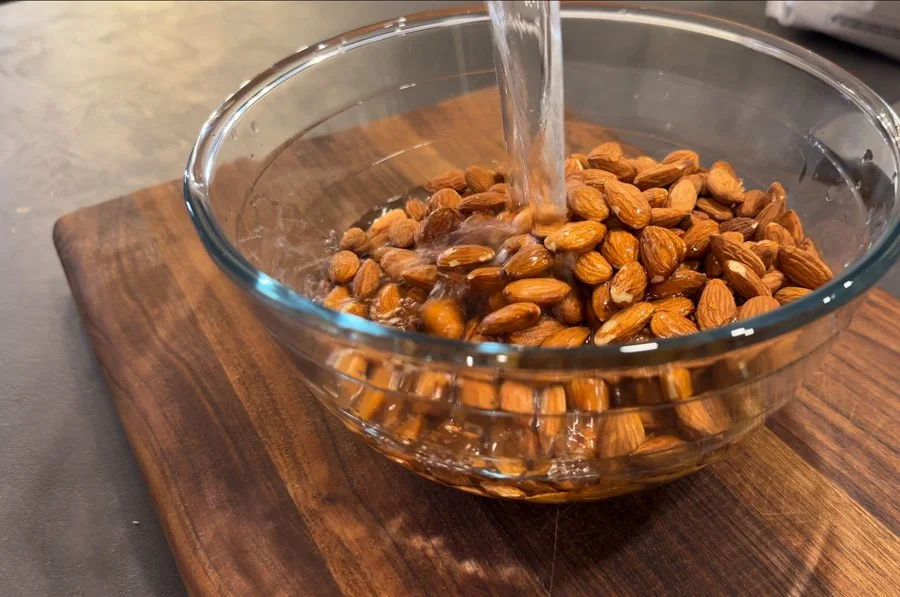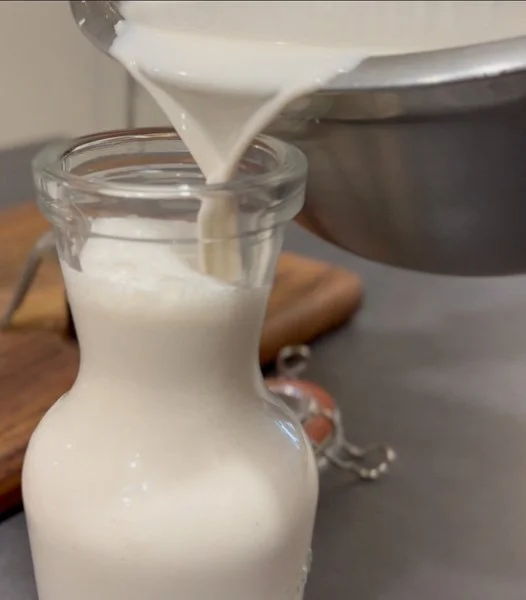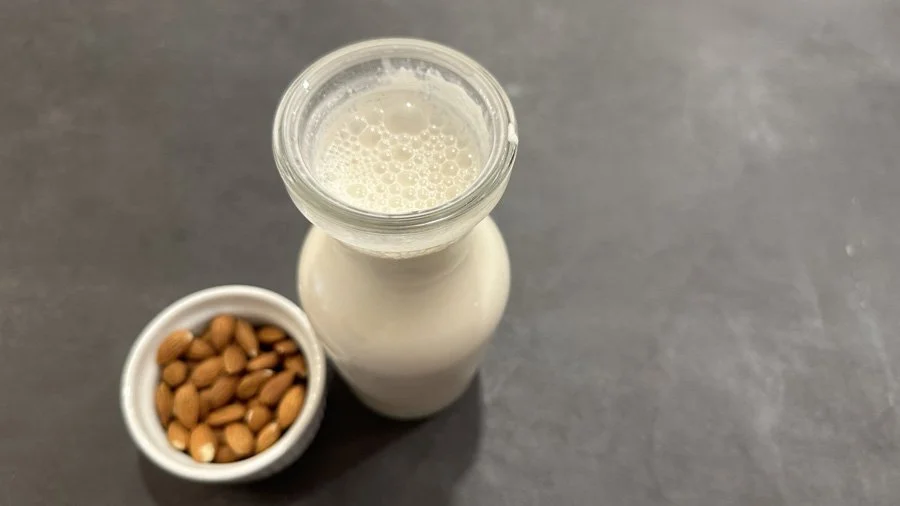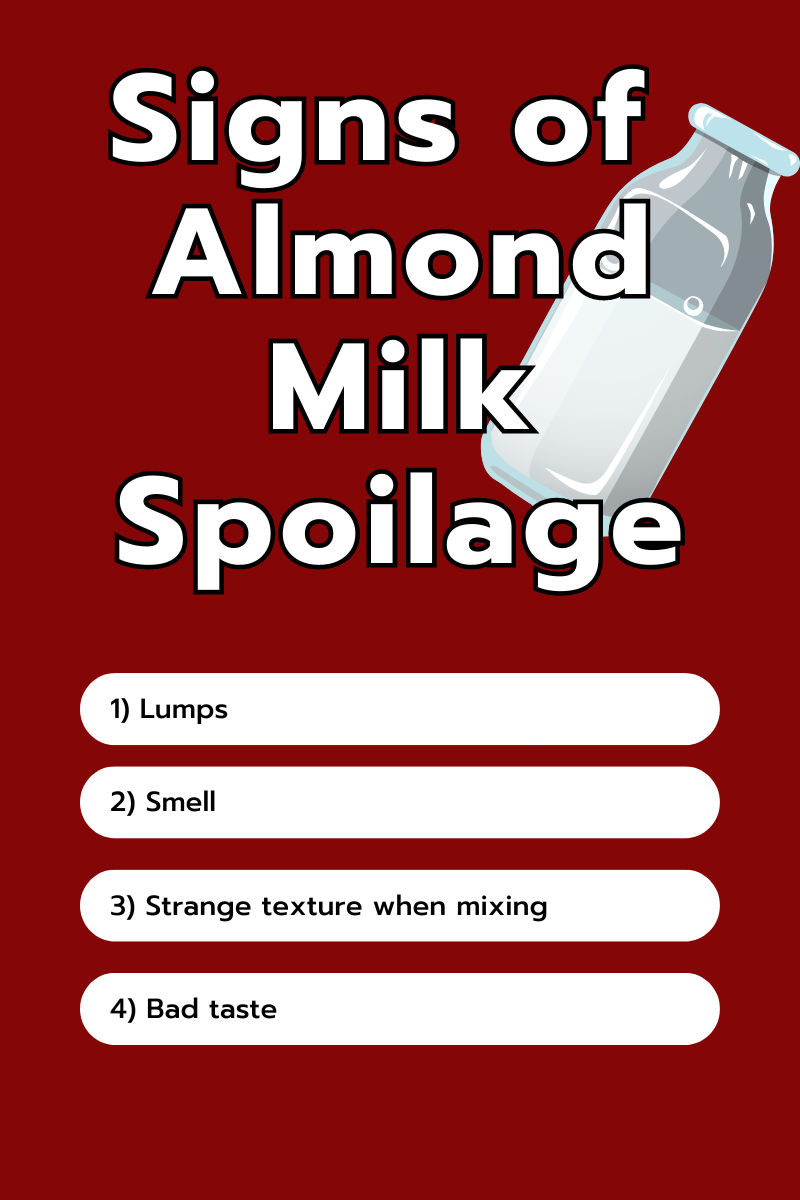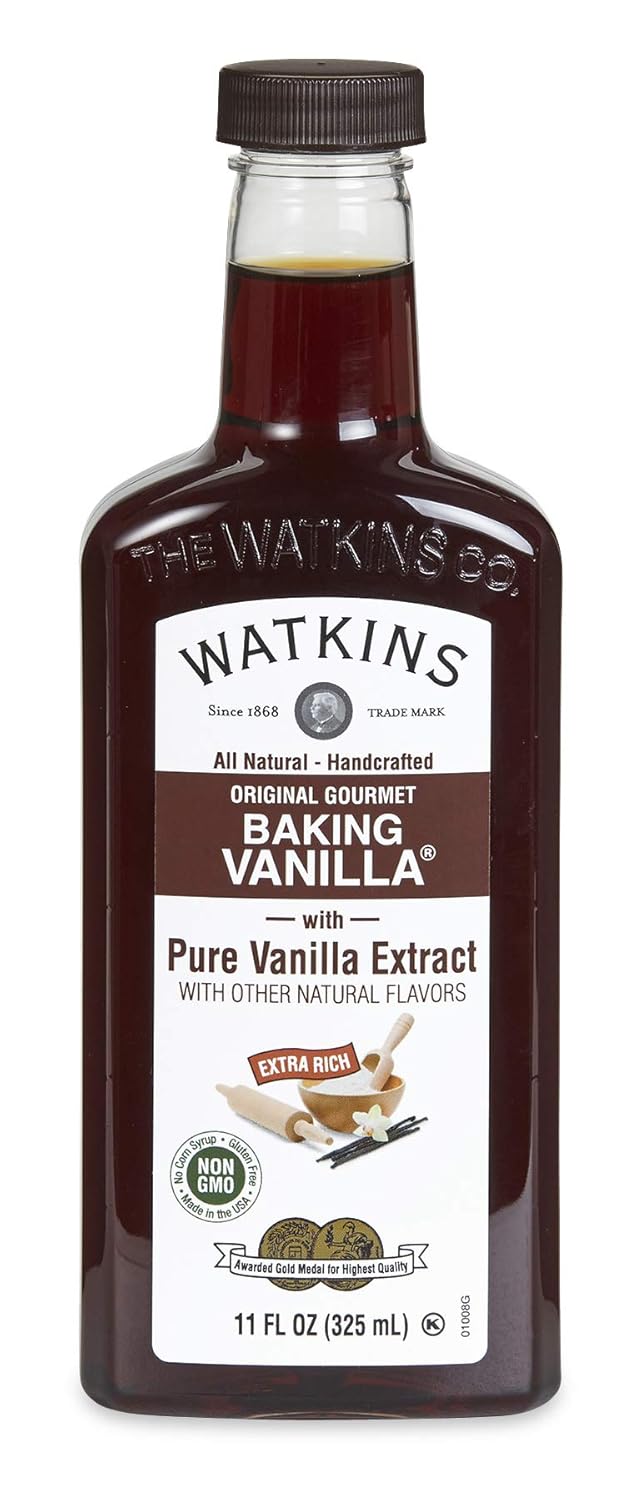Discover How to Make Homemade Almond Milk From Scratch
This post may contain affiliate links. Read our disclosure policy
Looking to incorporate more plant-based goodness into your daily routine? This guide on Homemade Almond Milk will help you do just that! I’ll show you how to make unsweetened almond milk, vanilla almond milk, and chocolate almond milk without any additives to enjoy refreshing nut milk, perfect for so many uses!
Watch How to Make almond milk From scratch here:
Nut milks have been super popular since the turn of the century for those wanting to have more plant-based goodness in their diets. In 2013, almond milk beat soy milk as the most purchased plant-based milk, and even resulted in a decline of cow’s milk being purchased. Would you believe that almond milk has been used for over a thousand years though?
While the exact origins and timeline of almond milk is unclear, it has been discovered in Egyptian, North African and other Middle Eastern recipes. It has also been thought to have been used in China and in India. In the early 12th century, the use of almond milk made its way to Europe. In Christian regions, almond milk was used as a substitute for fish and meat broths during fasting seasons.
In the 19th century, California in the United States became major almond producers, though from what we’ve seen, almonds are not native to California. A religious group known as the Seventh Day Adventists were primarily made up of vegetarian and vegan members. These individuals were promoting the health benefits of almond milk, and its popularity quickly grew outside of the religious group by the early 2000s. Now here we are today, with almond milk flying off shelves and available at most coffee shops to accommodate for people’s dietary preferences!
I have a confession to make - I don’t really like any of the plant-based milks except for chocolate soy and almond milks (spoiler alert: I’ll show you how to make chocolate almond milk here!)! Don’t come after me, but I really just prefer cow’s milk! I’ve given almond milk and oat milk a fair chance when making drinks such coffees, smoothies and using it for my oatmeal, but I just haven’t liked the taste and texture of it. However, I have to admit that this easy almond milk recipe has been the most delicious almond milk I’ve ever tasted! Coming from a huge cow’s milk lover, this has got to say a lot!
Have you heard that making your own nut milk is the healthiest and most natural option? It really isn’t so difficult to do at all, and my goal with this guide on homemade almond milk will give you the confidence to do it yourself! Be sure to try out this easy almond milk recipe to check off making your own plant-based nut milk as part of your Live to Cook one-month challenge! You’ll see later on in this post that the options to use up your own almond milk really are endless! This simple homemade almond milk recipe can help you get started on your cooking journey, and if that’s what you want to do, then be sure to sign up to my newsletter and have free resources to motivate you in the kitchen! Also, you’ll get all of my new recipes delivered right to your inbox!
To follow along with all the steps to make the base almond milk recipe and the variations, then check out the video! If you haven’t already, I’d really appreciate it if you would please subscribe to my YouTube channel and don’t forget to press the bell button to be notified when all of my video recipes are live! Let’s get started!
Why Make Almond Milk from Scratch?
Preservative and thickener-free: The store-bought almond milks can contain maltodextrin, guar gum, and carrageenan, which are shown to bother some people’s digestive systems. The store-bought almond milks require these ingredients to stabilize the almond milk so that it does not separate and so that it can last longer, as with many other store-bought products. I always like to go natural with my ingredients, and homemade is the ultimate way to ensure everything is natural and tolerable to sensitive tummies!
Money saver: You’ll save lots of money by making almond milk from scratch at home. Nowadays, the shelf-stable 1.89 L cartons of almond milk cost $5.49 CAD ($4.50 CAD if you purchase 2), and the shelf-stable cartons at 948 L cost $3.29 or even $3.49 each ($3 if you purchase 2). That boils down to a range of about 30 cents to 42 cents per 100 mL. Check out my table below to see how I broke down the cost of our almond milk from scratch to be about 28 cents per 100 mL! It pays off in the long run!
Easy to make: While the process seems lengthy, the actual steps themselves are super easy to follow and execute! You’ll see how soon!
Minimal ingredients: There are only 2 ingredients for the unsweetened almond milk, which are almonds and water. If you’re an avid almond eater, then I doubt you have to run to the shop to make this recipe! Furthermore, even the variations don’t require many additional ingredients either!
Customizable: You’ll see with the variations how you can really make your almond milk specific to your preferences! Whether you want it to prominently taste vanilla, sweet, or chocolatey, you’re fully in control by making your own almond milk!
Suitable for many diets: Almond milk is perfect for many folks to tolerate because it is naturally lactose-free. It is also gluten-free, dairy-free, and vegan. Almond milk is low in calories, so consuming almond milk over cow’s milk or other plant-based milk can help you lose weight.
Costs of Almond Milk
Equipment needed to make almond milk
Is Almond Milk Healthy?
Almond milk is healthy in the sense that the packaged almond milks are enriched with calcium and Vitamin D to make the nutritional profile similar to cow’s milk. However, to be honest with you our almond milk made from scratch does not have these vitamins, as I’m not quite sure how you would enrich the almond milk with calcium and Vitamin D at home (please comment below if there is a way to do this!). Additionally, almond milk is not a source of protein, whether store-bought or homemade, since we are watering down the almonds, resulting in losing a fair amount of protein content (the main protein content from the almonds is found in the pulp that’s leftover). We also lose the fibre content from whole almonds in almond milk.
On the other hand, we do have the Vitamin E content from almonds, so our almond milk will be a rich source of that. Unsweetened almond milk is also sugar-free and very low in calories, which makes those who are looking to reduce calories tend to choose almond milk over cow’s milk.
Also, consider the fact that there are no added artificial sweeteners, preservatives, or other thickening agents. In my opinion, the healthiest food includes those that are not processed. While you may not have a high amount of protein, calcium or Vitamin D in your homemade almond milk, if you include your homemade almond milk as part of a balanced diet (for instance, combining protein powder with the almond milk in some oatmeal!), then the lack of preservatives will most certainly benefit your health in the long run, especially if you experience digestive problems from the thickening agents. Almond milk - especially homemade - is perfect for those with sensitive guts because it is naturally lactose-free, dairy-free, and gluten-free.
To Peel Or not to Peel the almonds?
It actually doesn’t really matter whether or not you peel them, but with that being said I recommend you DON’T do it to save yourself the time! Because the pulp will be extracted when you strain the milk with the cheesecloth, the peel will technically come out anyway.
Ingredients needed for Homemade Almond Milk
For all ingredient quantities and to save the recipe for later, scroll to the bottom of this post for the FULL PRINTABLE RECIPE CARD. You will also be able to scale the recipe based on how much almond milk you want to make. By default, you’ll get about 12 cups of almond milk.
Almonds: I’ve used raw, unsalted almonds. Salted almonds will make your almond milk salty, which may not be a bad thing if you’re going to use the almond milk for baking, but probably not so good if you want to drink it. If you use roasted almonds, this could intensify the flavours. Experiment and be sure to let me know if other types of almonds work! To keep a neutral flavour for me to create a base recipe, raw, unsalted almonds were the best choice.
Water: For 1 cup of almonds, you’ll need 4 cups of water.
How to Make Almond Milk at Home?
Wash the almonds well and then soak in water for at least 8 hours, preferably overnight. If you decide to make the almond milk later, make sure to drain the water and cover with a damp cloth until ready to prepare.
For unsweetened almond milk, add soaked almonds to a food processor and then add water. For 4 cups of un-soaked almonds, process in 4 separate batches, adding 3-4 cups of water for each batch.
Run the food processor/blender on high and once the almonds are puréed and completely smooth prepare a bowl with a sieve and a cheese cloth over the top. Pour the purée over the cheesecloth and let the milk filter and collect in the bowl. Once the milk stops dripping naturally, gather the edges of the cheese cloth and squeeze tight to extract any remaining milk.
Transfer to a jar or pitcher and refrigerate.
Taste and adjust for sweetness as you’ll see in the next section and enjoy your almond milk!
How to Sweeten Almond Milk?
The base almond milk recipe only needs the almonds and water. It tastes okay, but to be honest with you I recommend you go for the sweetened variation, unless you need the unsweetened almond milk for baking! However, if you want some sweetness and extra flavour, you can make Vanilla Almond Milk by adding some maple syrup and vanilla extract. You can either add these in the blender with the almonds and water or stir these in after you’ve extracted the pulp and have yielded all the almond milk.
You can sweeten your almond milk in a variety of ways! You can use granulated white sugar, brown sugar, honey, cane sugar, or agave syrup. Keep in mind that if you use a powdered sweetener and you’ve added it after you’ve blended the almonds and water that it’ll take a bit longer to dissolve, however, they should still work fine. You can even use dates to sweeten!
How to Make Chocolate Almond Milk?
You can make your chocolate almond milk either sweetened or unsweetened. For unsweetened chocolate almond milk, simply add in some cacao powder or cocoa powder. If you want it sweetened, then add in vanilla extract and maple syrup, or whatever sweetener you want.
For unsweetened chocolate almond milk, add soaked almonds and cacao powder to a food processor and then add water. For 4 cups of un-soaked almonds, process in 4 separate batches, adding 3-4 cups of water for each batch. To make it sweetened, add vanilla and the sweetener as well.
Enjoy your chocolate almond milk!
What to do with the almond pulp?
Some people save their almond pulp/almond meal for baking purposes, such as to make almond meal cookies, crackers or cakes. To be honest with you, I didn’t see myself ever using it, so I just discarded it! If you do lot of baking with almond meal, then it will definitely be cheaper and worthwhile to save it instead of buying it!
Tips for Tasty Homemade Almond Milk
If making almond milk in bulk, you’ll need to blend your soaked almonds in batches of 1 cup of soaked almonds per batch.
Let the milk extract naturally first using gravity, a cheesecloth and a sieve. When it’s not dripping anymore, squeeze the remaining contents to get out all of the leftover milk until nothing else comes out.
If you plan on having the entire batch of almond milk be chocolate or vanilla, then you can add the mix-ins directly with the almonds and water together in the blender. On the other hand, if you want to separate your batch of almond milk with different flavours, then you’ll need to add the mix-ins to the prepared almond milk for the desired portion.
How to Use Almond Milk
You can use almond milk just like any other milk, really! You can pretty much use it how you would use a dairy milk. My free guide on how to spark inspiration in the kitchen, Make Cooking Fun! describes how you can whip up so many new recipes revolving around one simple ingredient you have on hand in the pantry or in the fridge. The list below is honestly a VERY small sample of what you can do with your almond milk!
Oatmeal: You can use your almond milk in hot stovetop oats or add to cold overnight oats!
Smoothies and protein shakes: Using almond milk instead of milk for any cold beverage, such as a Mango Lassi or my Chocolate Blueberry Smoothie Bowl with Chia Seeds!
In cereal: Just pour some milk over your cereal for a tasty snack or breakfast!
On its own: Now I don’t think I would do this with the regular almond milk, but I loved drinking the chocolate almond milk on its own in a glass! It’s great!
French toast: To make your French toast dairy-free, this almond milk is perfect! Try it out on my Overnight French Toast Casserole or if you want a savoury French toast, try it in my Indian-Spiced French Toast.
Puddings: Use your almond milk in a variety of puddings, such as Arroz con Leche (Peruvian rice pudding), or some of my Indian favourites, such as Gajar ka Halwa (carrot pudding) or Seviyan Kheer (vermicelli pudding).
Coffee: Hot or cold coffees will all be great with your almond milk from scratch! For cold coffee, try it out in my Iced Mocha or Iced Brown Sugar Shaken Espresso. For hot coffee, you can make milk foam from the almond milk using a handheld frother to add in a latte or cappuccino, such as my Cocoa Cappuccino. However, if using the almond milk for hot drinks, be sure to read the section below!
Tea: Check out my Masala Chai or my Indian Turmeric Chai Latte for a more indulgent tea recipe! Again, read the section below if you plan on using almond milk for hot tea.
Pancakes & crepes: My recipe for all of my pancake batters use cow’s milk, but I have used almond milk instead in the past just to see the results. Unfortunately, almond milk doesn’t make pancakes as fluffy, but it’ll still do the job. You can even use it in crepes, such as my Lemon Mascarpone Crepes or Nutella Strawberry Banana Crepes.
As a gift: Got someone who just loves almond milk? When you store your almond milk in a nice mason jar or glass bottle, this can make a really thoughtful gift! Homemade is always close to the heart!
Can You Boil Homemade Almond Milk For Coffee Or Tea?
Thankfully I wasn’t the guinea pig here but my fiancée, who loves her vanilla steamers, tried making her classic nightly drink with my Homemade Almond Milk instead of whole milk. Unfortunately, heating the almond milk in the microwave until it came to a boil resulted in curdling and a disgusting taste that wasn’t edible for her. If you want to use your almond milk for a hot beverage, then make sure you only steam it until warm and do NOT let it come to a boil! That’s how Starbucks and other coffee shops who use almond milk in their drinks do it - you can gently warm it up!
To do this, you can either heat your almond milk over the stove in a saucepan until it comes to a simmer, or heat it in a microwave safe cup or container in the microwave in 20 to 30 second intervals until the milk is warm but not up to a boil. The microwave option may be more risky since it is likely to come to a boil unless you’re super careful, and it’s not as gentle as over the stove.
How to Store Homemade Almond Milk?
Almond milk is best stored in a mason jar or any other tall glass jar or bottle. If you don’t have any of these available to you, then transferring your almond milk in an airtight container will be just fine! Make sure to store Almond Milk from Scratch in the fridge.
Is it Normal for my Almond Milk to Separate?
Yes, it is normal for your Homemade Almond Milk to separate, so don’t worry! If you do see it separated, then simply give it a shake until you have a smooth and consistent texture.
How Long Will Almond Milk from Scratch Last?
You may think that because almond milk is not dairy milk it will last longer. However, this is not the case! Almonds themselves will have a long pantry life if stored properly. However, almonds do naturally contain bacteria, and when you make almond milk, you introduce water to the almonds and the bacteria that are part of the almonds. Also, the process of making almond milk through blending incorporates lots of air into the final nut milk, which is due to the exposure of oxygen via air and the moistness via the water that gives these bacteria the food they need to multiply, fester, and start to spoil the almond milk! As a result, I would not recommend keeping your almond milk in the fridge for longer than 5 days.
Here are some signs of spoiled almond milk:
Other Essential Recipes For Baking!
If you liked this recipe please let me know in the comments. Tag your post on social media using #cookingwithanadi and mention me @cooking.with.anadi.

How to Make Almond Milk from Scratch - 3 Ways!
Ingredients
- 4 Cups almonds
- 12-16 Cups water
- 4 Cups almonds
- 12-16 Cups water
- 1-2 tsp vanilla extract
- 1/4 Cup maple syrup
- 4 Cups almonds
- 12-16 Cups water
- 1-2 tsp vanilla extract
- 1/4 Cup maple syrup
- 1/2 Tbsp - 1 Tbsp cacao powder (or more, if desired)
Instructions
- Wash the almonds well and then soak in water for at least 8 hours, preferably overnight. If you decide to make the almond milk later, make sure to drain the water and cover with a damp cloth until ready to prepare.
- For unsweetened almond milk, add soaked almonds to a food processor and then add water. For 4 cups of un-soaked almonds, process in 4 separate batches, adding 3-4 cups of water for each batch. To make it sweetened, add vanilla and maple syrup as well.
- For unsweetened chocolate almond milk, add soaked almonds and cacao powder to a food processor and then add water. For 4 cups of un-soaked almonds, process in 4 separate batches, adding 3-4 cups of water for each batch. To make it sweetened, add vanilla and maple syrup as well.
- Run the food processor/blender on high and once the almonds are puréed and completely smooth prepare a bowl with a sieve and a cheese cloth over the top. Pour the purée over the cheesecloth and let the milk filter and collect in the bowl. Once the milk stops dripping naturally, gather the edges of the cheese cloth and squeeze tight to extract any remaining milk.
- Transfer to a jar or pitcher and refrigerate. Taste and adjust for sweetness and enjoy your almond milk.
Nutrition info is an estimate.
Follow me
Meet Anadi
Welcome to Cooking With Anadi. This platform is all about making cooking exciting and finding new ways to bring classic flavours and recipes at your service. Join me in my personal journey in the world of cooking. Hope you have a great ride!








